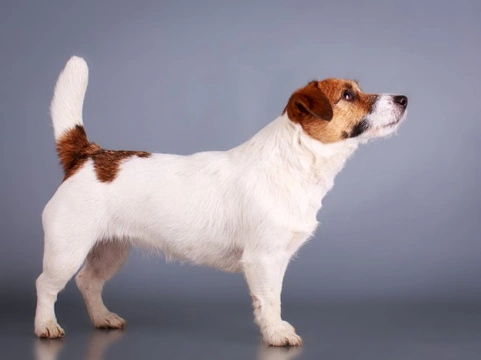
Jack Russell hereditary health and average longevity
The Jack Russell dog is the breed most likely to come to mind when one thinks of the terrier, and indeed, the Jack Russell is consistently one of the most popular and commonly owned dogs in the UK year on year. Small, feisty and energetic, the Jack Russell may be little, but they are no pushover, and require confident handling and clear boundaries to keep them obedient and under control!
Jack Russell dogs can stand between 10-15” tall at the withers, with their weight in proportion to their height. They can be found in three coat variants, being smooth, rough or broken, with a broken coat being a mixture of both smooth and rough. Most Jack Russells tend to be mainly white in colour, with patches in black, tan or both. However, Jack Russells can be seen in a range of other colours too, including tan with white and various others.
While the Jack Russell was first developed as a working dog for pursuing prey to ground, they are today much more widely owned as pets. However, the working history of the breed remains strong, and Jack Russells can still widely be seen fulfilling working roles in rural areas.
If you are considering buying or adopting one of these plucky, confident and entertaining little dogs, it is important to do plenty of research to ensure that you know what you are letting yourself in for! It is also wise to find out as much as you can about the hereditary health and average longevity of the breed as a whole, and we will look into this in more detail in this article.
Jack Russell longevity
The average lifespan of the Jack Russell is 13-16 years of age, which is notably higher than the average across the board for all dog breeds of a similar size and build. This indicates that the Jack Russell breed as a whole is fit, robust and tends to be healthy.
Genetic diversity
The Jack Russell breed pool is considered to be wide and diverse, as various other breeds of dog are commonly crossed with Jack Russell breed lines, and many different types of dog were involved in the formation of the breed in the first place.
Added to this, the sheer number of Jack Russell dogs within the UK means that the breed does not need to rely on inbreeding or back crossing in order to produce good quality dogs in perpetuity.
The average coefficient of inbreeding statistic for the Jack Russell breed as a whole is under 6%, which is within acceptable norms.
Health testing for the Jack Russell
Despite the genetic diversity and general robust health of the breed as a whole, breeders of pedigree Jack Russells are advised to undertake heath screening on their parent dogs to ensure that they are in good health, and not likely to pass on any genetic defects to their puppies. The British Veterinary Association recommends testing for two eye diseases that are known to crop up within Jack Russell breed lines, being progressive retinal atrophy and primary lens luxation respectively.
As well as this, DNA testing is available for dogs of the breed to identify a predisposition to primary lens luxation, and progressive retinal atrophy.
Other health issues
While the Jack Russell breed is certainly not a high profile breed or one that is considered to be at risk of a wide range of hereditary conditions, like all pedigree breeds, the Jack Russell gene pool does occasionally present certain diseases within some breed lines. While none of these conditions are considered to be widely spread within the breed or overly common, owners of Jack Russells should be aware of the following hereditary problems that may arise:
- Deafness in some all-white or mainly white Jack Russells, due to a side effect of the genetic marker that produces a white coat.
- Epilepsy, which has a hereditary element to it. While epileptic dogs can often lead normal lives with medication, epileptic dogs should not be used for breeding.
- Legg-Calve-Perthes disease, a condition that affects the head of the femur bone and leads to lameness of the hind legs.
- Myasthenia gravis (Muscle wastage disorder).
- Patellar luxation, a condition caused by the ligaments and muscles that hold the kneecaps in place being incorrectly formed, which can lead to dislocation of the knee caps.
- Ataxia, a brain disorder that leads to progressive incoordination in affected dogs.
- Cataracts, although these are generally operable.
- Portosystemic shunt, a condition that causes the blood’s circulatory system to bypass the liver, leading to a dangerous build-up of toxins in the blood.
- Von Willebrand’s disease(Clotting disorder of the blood).
- Generalised immunodeficiency syndrome, which can make affected dogs prone to recurrent infections and a propensity to contracting minor ills and ailments.



